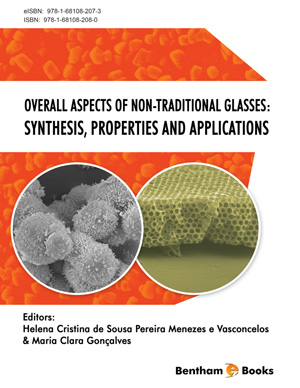Abstract
SHS investigation development is considered from the geographical and historical viewpoint. 3 stages are described. Within Stage 1 the work was carried out in the Department of the Institute of Chemical Physics in Chernogolovka where the scientific discovery had been made. At Stage 2 the interest to SHS arose in different cities and towns of the former USSR. Within Stage 3 SHS entered the international scene. Now SHS processes and products are being studied in more than 50 countries.
Abstract
This chapter revisits the concepts of the vitreous state and the main theories concerning the glass structure and the criteria for glass formation.
First, the conditions for the formation of a vitreous solid from cooling down from a melt are presented, together with the meaning of transformation temperature of glass. Also it is referred the influence of the thermal history of a glass on its properties.
Next, a survey of the existing literature on the structure of glasses is made.
Several structural theories are presented: Zachariasen, Lebedev, Huggins and Porai- Koshits which are here considered to be the most important theories for glass structure.
Also, it is relevant the presentation of diverse theories which postulate the criteria which have to be followed by an oxide to be considered as a glass-forming oxide.
In this way criteria based on crystal chemistry concepts (Goldschmidt, Zachariasen), criteria based on the correlation between the ability to form glass and the bond strength (Dietzel, Sun, Rawson) and between the glass-forming ability and the type of bonding (Smekal, Stanworth) are discussed.
Finally, the main experimental techniques commonly used to the study of glasses structure are briefly presented.
Such techniques include X-ray diffraction, Small angle X-ray scattering, Fourier transform Infrared spectroscopy, Infrared reflection spectroscopy, Raman spectroscopy, Nuclear magnetic resonance and Electron microscopy (scanning and transmission, coupled with electron probe microanalysis). And for the study of chemical composition of glass and surface glass layers: Auger electron spectroscopy, secondary ion mass spectrometry and Rutherford back spectrometry.
Keywords:
Crystallites, Dietzel, glass structure, glass-forming criteria, glassforming oxides, Goldschmidt, Lebedev, Porai-Koshits, random network, Rawson, Smekal, structons, Sun, transformation temperature, vitreous state, Zachariasen.
Recommended Chapters
We recommend

Authors:Bentham Science Books


 Download PDF Flyer
Download PDF Flyer



